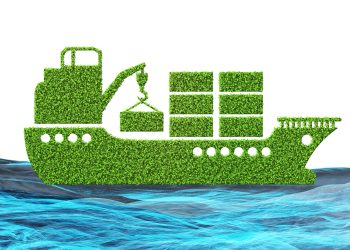Cruise Lines International Association (CLIA), released its annual Global Cruise Industry Environmental Technologies and Practices Report, showing continued progress by the sector in advancing its environmental and sustainability agenda, including investments in ships and technologies for the uptake of transitional and alternative fuels.
Kelly Craighead, president and CEO of Cruise Lines International Association said that cruise lines are continuing to reduce their emissions at sea and at berth in pursuit of net zero emissions by 2050.
This year’s environmental technologies report demonstrates their progress, with the industry investing in engine technologies with conversion capabilities that will allow ships to use more renewable energy sources as they become available and making important incremental steps to employ a range of other environmental technologies and practices to advance the industry’s wider sustainability initiatives.
…Craighead added.
Highlights include:
Fleet Profile
- The CLIA member ocean fleet includes 303 ships and a total capacity of 635,000 lower berths operated by 45 cruise line brands representing 90% of capacity — an increase of 3.6% and 3.34% respectively, compared to the prior year.
- Analysis of the current CLIA member cruise line fleet indicates that the majority of ocean-going ships operated by CLIA member cruise lines are small to mid-size ships, with ship size distribution across the fleet as follows:
- 35% of ships are small ships (fewer than 1,000 lower berths)
- 38% of ships are mid-size ships (1,000 to fewer than 3,000 lower berths)
- 26% of ships are large ships (upwards of 3,000 lower berths)
Fuel Flexibility
CLIA member cruise lines are investing in new ships and engines that allow for fuel flexibility. This includes capability to use renewable biodiesel, investments in the capability to use green methanol when available, and liquified natural gas (LNG). Ships designed with engines and fuel supply systems able to operate on LNG will be able to switch to zero and near-zero fuels such as bio or synthetic LNG in the future, with no engine modifications.
- 19 ships (representing 7% of the fleet and 13% of the fleet’s global capacity) are using LNG for primary propulsion.
LNG has virtually zero sulfur emissions and particulate emissions, reduces NOx emissions by approximately 85% and achieves up to a 20% reduction in GHG emissions. Multiple reports confirm that methane slip (small amounts of escaped methane) – an acknowledged issue with LNG engines – is on a path to be nearly eradicated, with some industry stakeholders claiming that slip values of less than 1% is achievable within the next few years.
Selective Catalytic Reduction Technology (SCR)
- 71 ships, representing 25% of the fleet and more than 20% of global capacity, have SCR systems — an increase of 34% from 2023.
Selective Catalytic Reduction technology (SCR) reduces particulate matter and nitrogen oxide emissions, thus helping ships to meet IMO Tier III classification standards for nitrogen oxide emissions (NOx). Onshore Power Supply (OPS)—also referred to as Shoreside Electricity (SSE) Capability
Plugging in to OPS when ships are in port allows ships’ engines to be switched off, achieving significant overall pollutant emissions reductions of up to 98%, depending on the mix of energy sources, according to studies conducted by a number of the world’s ports and the U.S. Environmental Protection Agency.
Across the CLIA cruise line member fleet:
- 147 ships are able to connect to OPS (52% of the total number of ships and 61% of capacity) — 23% more than the prior year and 167% more since 2018.
- By 2028, 239 ships that are able to connect to OPS are expected to be in service (based on the number of ships scheduled to be retrofitted and new ships on the order book specified for OPS connectivity). This includes 64 ships currently in service and each of the 28 CLIA member cruise ships on the 2024- 2028 order book — all of which are specified for OPS connectivity.
CLIA champions the advancement of onshore power infrastructure as an important component in the industry’s work to reduce emissions and supports continued development of cost-effective infrastructure for clean shoreside electricity in cruise ports when the net impact delivers an overall emission reduction.
- Currently 35 of the ports worldwide where cruise ships call (fewer than 3%) have a cruise berth with OPS.
- 22 additional cruise ports are funded for OPS infrastructure and 16 cruise ports are planning to install OPS — a total of 38 ports.
In 2022, CLIA announced that its ocean cruise line members made a commitment that all ships calling at ports capable of providing OPS will be equipped to either use shore power by 2035 or be able to use alternative low-carbon technologies, as available, to reduce emissions in port.
As part of the EU’s Fit for 55 decarbonization regulations, by 2030 major ports in Europe will be required to have shoreside power, which will further accelerate port infrastructure investment in that region.


































































